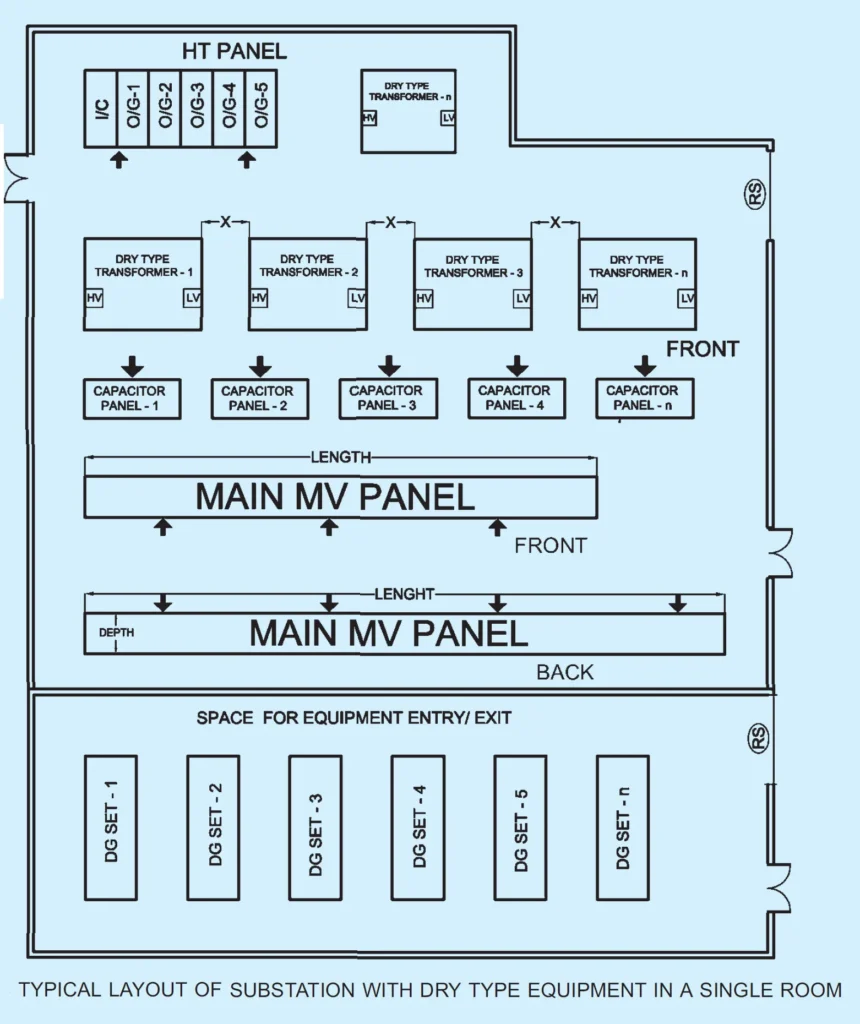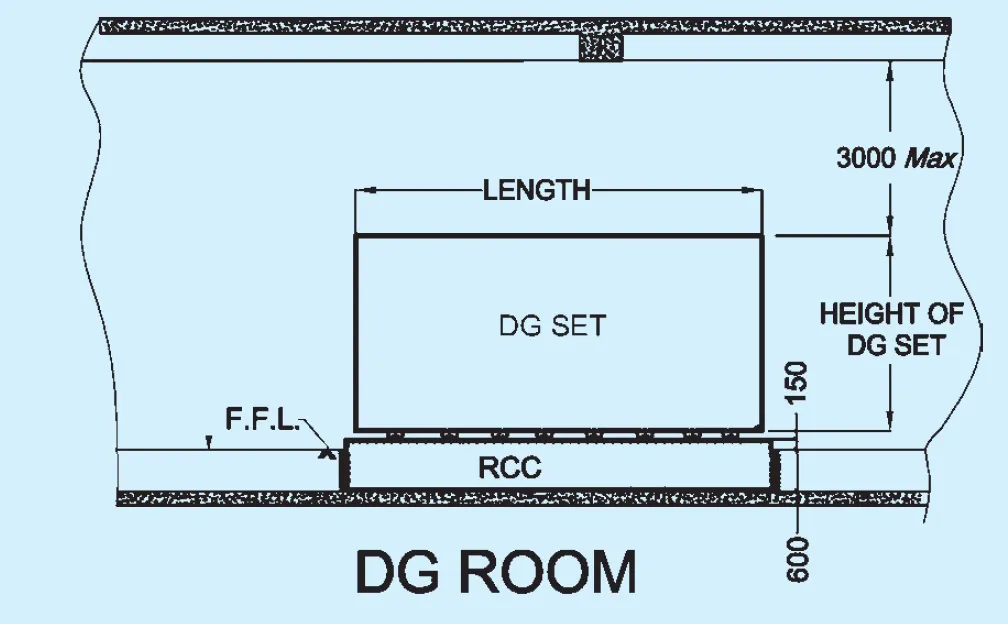If you want to know about the electrical distribution system or concept of earthing system or introduction of electricity production, please click the link.
Substations are typically located in a separate building or enclosure outside of a larger building, such as a power plant or industrial facility. However, in some cases, smaller substations may be located within a building or on a building’s premises. The layout of a substation within a building will depend on several factors, including the size of the building, the electrical load being served, and the available space.
- In allocating the area of substation, it is to be noted that the flow of electric power is from supply company’s meter room to HV room, then to transformer and finally to the MV switchgear room.
- The layout of the room and trenches of required depth shall be in accordance with this flow, so as to optimize the cables, bus-trunking, etc.
- Visibility of equipment controlled from the operating point of the controlling switchgear is also a desirable feature, though it may not be achievable in case of large substations.
- Substations shall not be located at or across expansion joints.
- The rooms/spaces required in a substation shall be provided as given below:
- Supply company’s meter room, generally at the periphery of the premise with direct access from the road/outside.
- HV isolation room, required in case the substation is away from the meter room and is planned adjacent to meter room for disconnecting supply in case of any repair required between meter room and substation.
- HV panel room/space, located adjacent to transformer;
- Transformer room/space, separate space in case of oil-filled transformer and combined space in case of dry type transformer.
- MV isolation room/space, required in case MV panel is away from transformer or on a different level for isolating supply in case of any repair required between transformer and MV switchgear; and
- Main MV panel room/space, required for distribution to different facility/utility in a building. A typical layout of a substation is shown in figure below.



These are just a few general guidelines for the layout of a substation within a building. The specific layout will depend on the unique needs and requirements of the building and the equipment being housed. It is recommended to consult with a qualified electrical engineer for specific guidance on substation design and layout.